By Jason Dickstein, MARPA
The FAA has issued new draft of its guidance on Instructions for Continued Airworthiness (ICA). The changes are not earth-shattering, but they serve as an excellent reminder of the FAA’s policies on ICAs.
ICAs are very important to repair stations and other facilities that perform maintenance and alterations. These documents provide the instructions that are typically followed by repair stations performing preventative maintenance, maintenance, and alteration on aircraft. By following these instructions, repair stations help to ensure that aircraft remain safe.
Increasingly, we are encountering stories of repair stations that are having problems obtaining the ICAs that they need in order to perform maintenance or alteration, safely. When a repair station is unable to obtain the latest versions of the ICAs, or when ICAs become incomplete because a previously-published repair has been removed in order to reserve it for use only by certain repair stations, then this can be the first domino in a chain that leads to a safety issue.
What Are the ICAs?
In general terms. ICAs are the maintenance and overhaul manuals on which we rely for maintenance and overhaul instructions. But this simple view of ICAs can easily miss some of the important yet subtle issues that surround those manuals. Technically speaking, ICAs are limited to the specific instructions that are required by the appendices that describe ICAs.
Different products have different requirements. For example, engine and propeller ICAs specifically require overhaul instructions, while airframe ICAs typically require information about recommended overhaul periods. It is normal to require a list of special tooling in the ICAs, but only the ICA regulations for engines require specific instruction on how to use the that tooling.
Who Produces the ICAs?
Most people understand that the typical source for ICAs is the manufacturer. In most cases, the manufacturer is both the design approval holder and the production approval holder. But in those rare cases where there is a split between the design approval holder and the production approval holder, the official responsibility for creating the ICAs rests with the design approval holder.
In addition, though, other design approval holders, including those who hold supplemental type certificates (STC), may have obligations to produce ICAs.
The design approval holder must produce ICAs that meet the appropriate regulatory requirements. The FAA imposes this obligation on design approval holders as a condition of the design approval, in order to make sure that those important safety instructions are created and shared with the parties that use them to maintain airworthiness in the aviation system.
The basic theme of the ICA requirements remains the same. The ICAs should provide the information that is necessary for an operator to maintain the airworthiness of the product. And in the modern era, that frequently means instructions for the operator’s maintenance contractor, who has an obligation to follow the instructions that the operator has identified for their fleet.
Some manufacturers may have “conditional” obligations to produce ICAs. For example, PMA holders are typically required to analyze whether the TC ICAs remains valid when the PMA is installed. If they remain valid, then the PMA holder does not need to produce alternative ICAs (and in fact should not do so). This approach helps to relieve confusion by continuing the use of the baseline ICAs when such use has been shown to be appropriate.
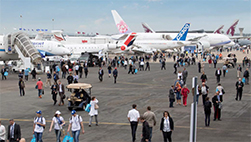
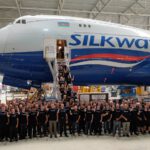
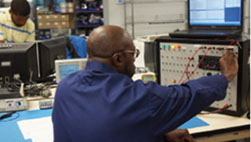 AFI KLM E&M continues to strengthen its offerings to customers worldwide, and particularly in the U. S. The company has, during the last several years, acquired several key companies and says that allows it to better serve current customers and positions itself to gain additional business in the largest MRO market in the world and the U. S.
AFI KLM E&M continues to strengthen its offerings to customers worldwide, and particularly in the U. S. The company has, during the last several years, acquired several key companies and says that allows it to better serve current customers and positions itself to gain additional business in the largest MRO market in the world and the U. S.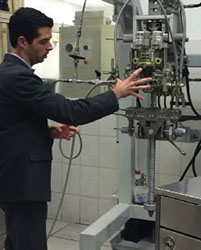 The two announced a common integrated sales team in May under the direction of John Rogers. The company said in May that the integration initiative was “fully in line with the AFI KLM E&M sales policy, with the objective of reinforcing a customer-centric approach and maximizing sales momentum. “The company also said at that time i twas working on strengthening the synergies of the two subsidiaries.
The two announced a common integrated sales team in May under the direction of John Rogers. The company said in May that the integration initiative was “fully in line with the AFI KLM E&M sales policy, with the objective of reinforcing a customer-centric approach and maximizing sales momentum. “The company also said at that time i twas working on strengthening the synergies of the two subsidiaries.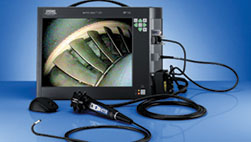 Camera-equipped borescopes—also known as endoscopes and videoscopes—are among the most useful tools in an aviation technician’s toolbox. Their thin, flexible and steerable extension arms with camera/light-equipped tips provide inside views of airframes and engines in the tightest of spaces and allow diagnoses to be made without having to tear down the section under inspection.
Camera-equipped borescopes—also known as endoscopes and videoscopes—are among the most useful tools in an aviation technician’s toolbox. Their thin, flexible and steerable extension arms with camera/light-equipped tips provide inside views of airframes and engines in the tightest of spaces and allow diagnoses to be made without having to tear down the section under inspection.

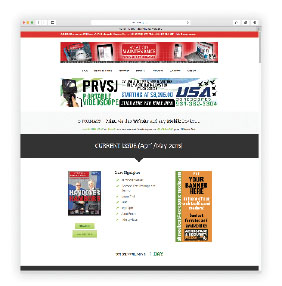 Aviation Maintenance has redesigned its website. I could write about the old one and how many challenges and limitations it had. I could do some research and tell you about some of the complaints we received about it. I could lament the old, tired look of it.
Aviation Maintenance has redesigned its website. I could write about the old one and how many challenges and limitations it had. I could do some research and tell you about some of the complaints we received about it. I could lament the old, tired look of it.